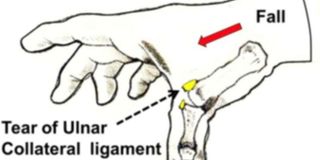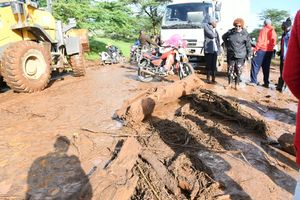How do you handle ‘Game keeper’s thumb’

An illustration of a thumb injury.
What you need to know:
- In summary any hand and thumb injuries should be managed acutely and fairly aggressively.
- Injured athletes should have a low threshold to have thumb injuries reviewed by a physician or good physiotherapist as missing this injury can lead to long-term pain and early arthritis in the thumb.
Hand injuries are fairly common and are seen in a variety of sports. The thumb is frequently injured in ball games or sports involving racquets or clubs. Aside from the fractures which require urgent treatment we will look at a ligament injury that is frequently not diagnosed.
“Game keeper’s thumb” is an injury to one of the ligaments that supports the thumb and prevents it from getting pulled back up the forearm.
The main ligament that stabilises the thumb is called the ulna collateral ligament (UCL).
The injury is called the “game keeper’s thumb as it was seen in Scottish game keepers who often sprained their thumbs when breaking the necks of small animals when hunting.
More recently it is commonly referred to as “skiers thumb.”
The modern injury is more commonly seen in sports like skiing, hockey, handball or basketball when a force pushes the thumb backwards. This is called ‘hyperabduction’.
The injury can also occur with repetitive forces rather than one major event in any of the sports already mentioned. It accounts for almost 90 percent of injuries to the thumb.
When injured there is sharp pain and swelling at the base of thumb. There may be bruising and often a fracture is suspected.
Typically the individual is unable to pinch the thumb to the index finger as this causes sharp pain. At the time of injury rest and ice and a splint if available are useful interventions to control the pain.
A visit to the emergency department is advised and an x-ray is performed to ensure there is no fracture. As mentioned earlier the absence of fractures does not mean the end of the story.
If the UCL injury is suspected a special kind of cast called a ‘thumb spica’ is applied to stabilise the thumb.
The injury can be classified into three grades:
Grade One: Stretched but still intact ligament;
Grade Two: Partial thickness tear to ligament;
Grade Three: Complete rupture of ligament.
The first two grades of injury can be safely managed in the thumb spica and specialist hand therapy after to return to function.
It is important to observe rest to avoid the ligament healing longer than it was leading to an unstable joint.
The grade three tears should not be missed as these often do not heal with the simple measures described.
The complete tear may require surgery to re-attach it to ensure return to function.
Making an acute assessment of the grade of injury is difficult due to the pain.
Persisting weakness and instability
For this reason most of these injuries are managed in the thumb spica initially and an orthopaedic assessment at two weeks is made. In this assessment the joint stability is checked when the pain is better controlled.
If there is doubt at this assessment then an ultrasound scan or an MRI scan is obtained to help in reaching the diagnosis.
The reason for this approach is in those rare cases where surgery is required, delaying more than three weeks has been shown to lead to persisting weakness and instability.
Whether surgery is undertaken or not then the thumb is kept in the cast for four to six weeks.
This is followed by specialist physiotherapy to regain movement and strength. It is, however, common to have persisting pain in the thumb.
In summary any hand and thumb injuries should be managed acutely and fairly aggressively.
Injured athletes should have a low threshold to have thumb injuries reviewed by a physician or good physiotherapist as missing this injury can lead to long-term pain and early arthritis in the thumb.
Mordicai is an orthopaedic surgeon specialising in sports injuries. [email protected]




